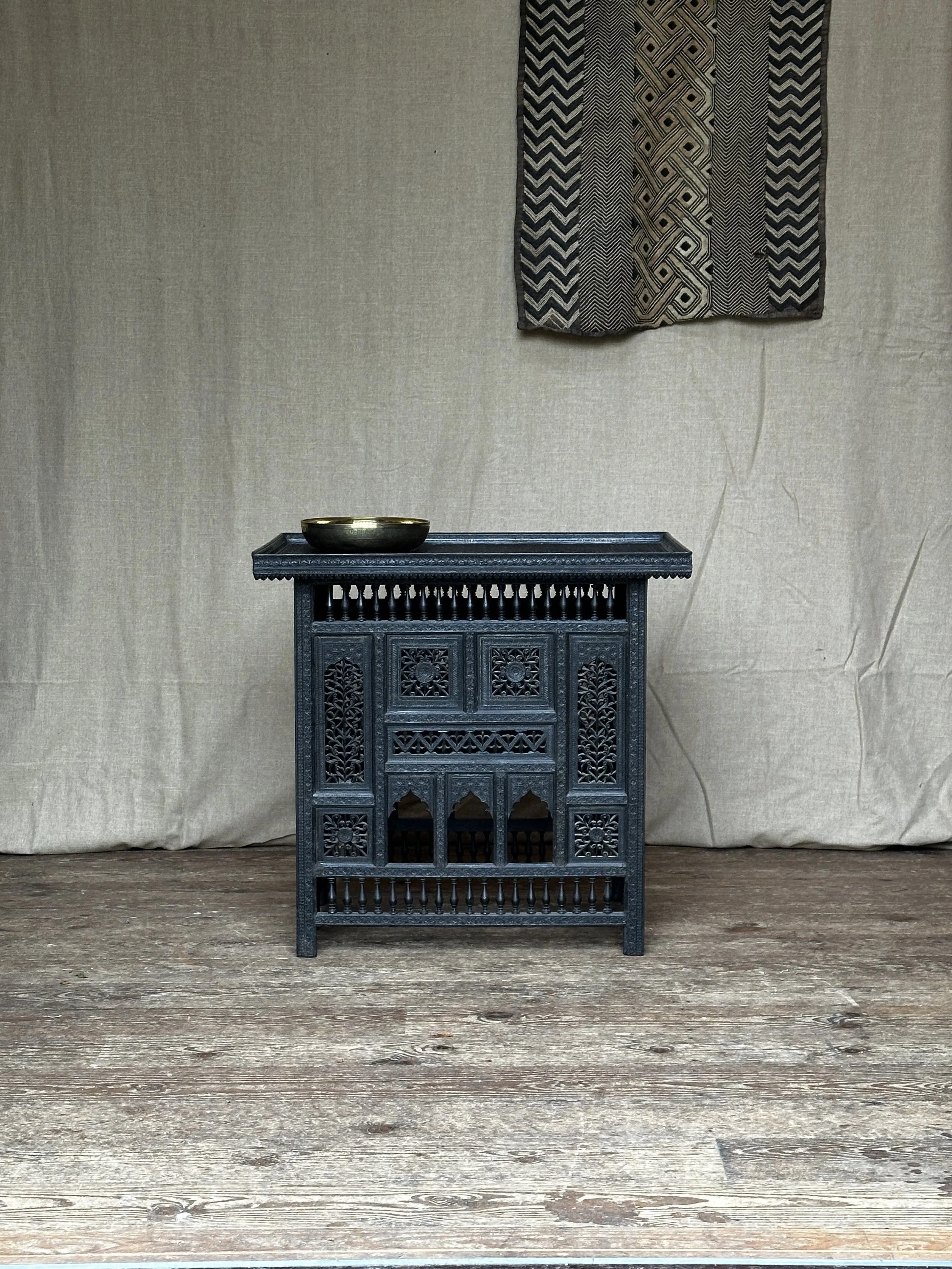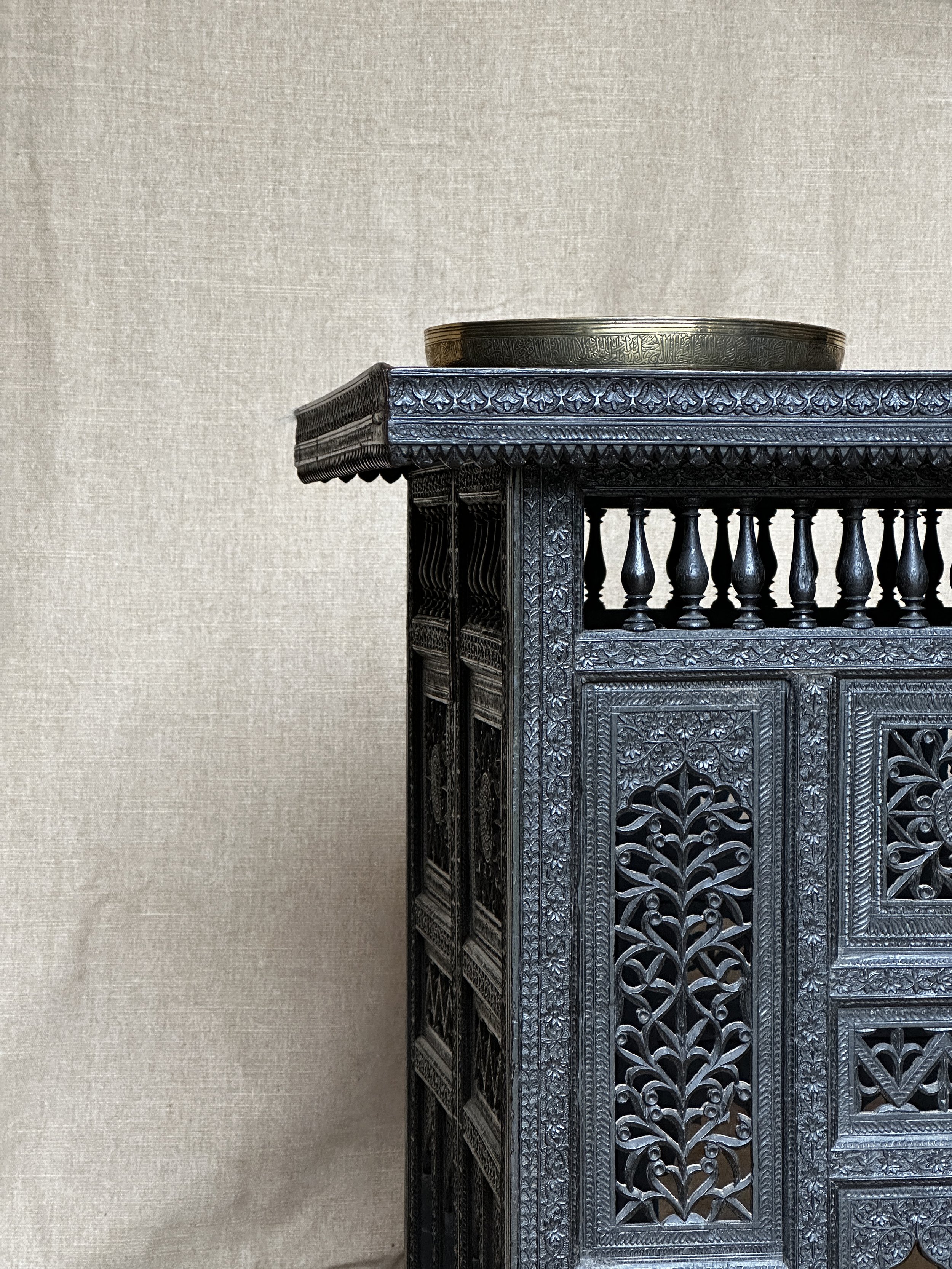Due to the exceptionally high quality of the carved ebony items produced in Nagina, art critics were confounded and wrongly believed that production had started there as early as the late 17th Century, when in fact it was not until the 1840s. The majority of pieces were made for export, mainly to Delhi, and this work is most often seen on the frames of Company School portraits and architectural miniatures on ivory.
Nagina wares were first shown internationally at The Great Exhibition of 1851 in London. Two boxes and an ink stand with similar dense floral and geometric decoration from Nagina are in the collection of the Victoria and Albert Museum, London, acquired in 1966 (V&A 01168, 01169 and 1172) (see Amin Jaffer Furniture From British India and Ceylon, V&A Publications 2001, p.265 nos. 91-3).
- https://collections.vam.ac.uk/item/O92169/stationery-box-unknown/
- https://collections.vam.ac.uk/item/O71111/inkstand-abdullah-muhammad/







